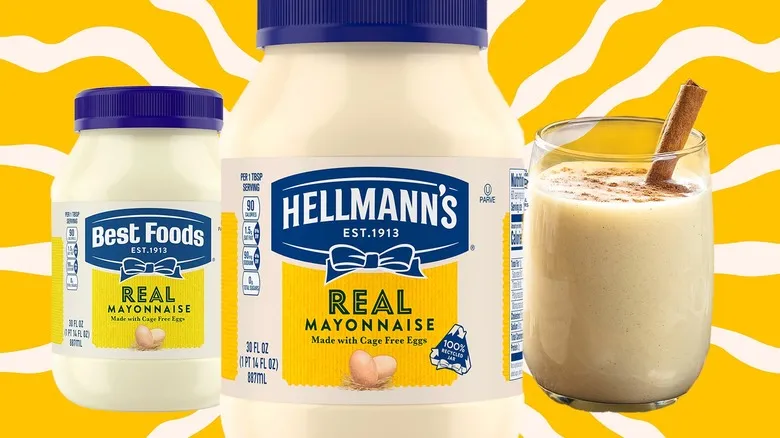Hellmann's founder planned a trip on the Titanic

Richard Hellmann, the creator of Hellmann's, appeared to be exceptionally suited for success in the food service industry. He had trained as an apprentice in a food hall in Germany, and his wife came from a family that owned a deli. Additionally, he possessed a keen business acumen, which allowed him to recognize a market opportunity in jarred mayonnaise—a product that shoppers were unaware they needed. As his mayonnaise sales began to take off, he fully committed to the venture, leaving his deli behind to establish a distribution center and acquire a fleet of delivery trucks.
Hellmann wasn't satisfied with merely regional or national distribution; he aimed for global reach. With this international vision, he and his wife traveled to Europe in 1912 to explore their options. While planning their return trip to New York, travel agents presented an enticing choice: a journey on the inaugural voyage of the luxurious new liner, the Titanic. Despite the allure of this option, Hellmann prioritized a swift return to New York and chose a quicker passage on a more modest vessel. This decision likely spared their lives.
Heard of Best Foods mayo? It's the same as Hellmann's
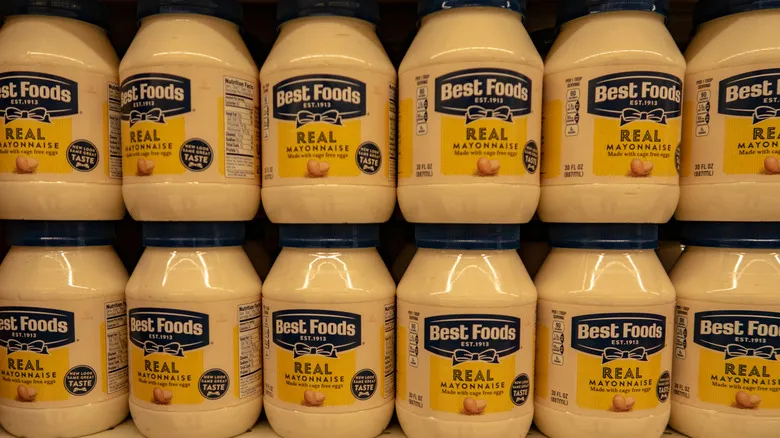
Hellmann's mayonnaise is such a well-known product that it often makes appearances in television shows and films. While the wide-mouthed jar and its striking yellow-and-blue label are recognizable to nearly all Americans, the name may not be as familiar. Instead, those living west of the Rockies are accustomed to seeing a different name on the label — Best Foods.
The Best Foods brand is a piece of history. It was once a popular early commercial mayonnaise brand in the American West. In 1927, Richard Hellmann sold his business to the Postum Company, which later became Best Foods. The company decided to retain the Hellmann's branding in the East, as it was already well-known and trusted by consumers. As a result, nearly a century later, Best Foods continues to be a favorite in the Western United States, while Hellmann's is the leading brand in the eastern half of the country. Despite their nearly identical packaging, it remains uncertain whether both brands use the same recipe, as some adventurous tasters claim to notice a difference.
Hellmann's is a favorite among high-end chefs

Hellmann's mayonnaise has established itself as a leading brand, capturing nearly half of the mayonnaise market in the United States, alongside its counterpart Best Foods. Its widespread availability has led many diners to associate the flavor of mayonnaise with Hellmann's.
Many culinary experts view this as a positive aspect—high-end chefs hold the brand in high regard. Boston-based chef Scott Jones shared with The Denver Post, "When my mayo turns out looking like Hellmann's, I know I've done it right." Likewise, professional taster and consultant Joanne Seltsam regards Hellmann's as an excellent example of a premium food product, thanks to its well-balanced flavor profile. The iconic Julia Child even favored Hellmann's for her American-style tuna salad over homemade French-style mayonnaise.
The blue ribbon on the Hellmann's label has a special meaning
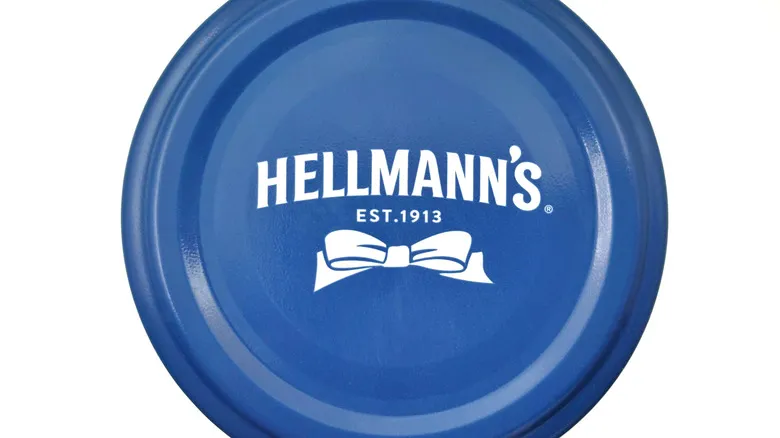
One potential factor contributing to Hellmann's enduring success is its ability to evolve with shifting consumer preferences. For instance, the brand provides its mayonnaise in both squeeze bottles and jars. As many contemporary diners are keen to explore new flavors, Hellmann's has introduced a range of flavored mayonnaise options, such as chipotle, chile-lime, and garlic aioli.
Nonetheless, the classic plain mayonnaise in a large jar continues to be its flagship product. Although the recipe has undergone minor adjustments over the years, the flavor and branding have remained largely unchanged. A distinctive element of Hellmann's label is the depiction of a blue ribbon. This emblem is not merely decorative; it pays homage to Hellmann's origins as a deli take-out item. When Richard Hellmann was personally crafting and selling mayonnaise, he offered two varieties, designating his premium version with a blue ribbon. This blue-ribbon variety quickly became a customer favorite, and the contemporary Hellmann's is built upon that foundation.
Hellmann's collaborated on an eggnog recipe featuring its mayo
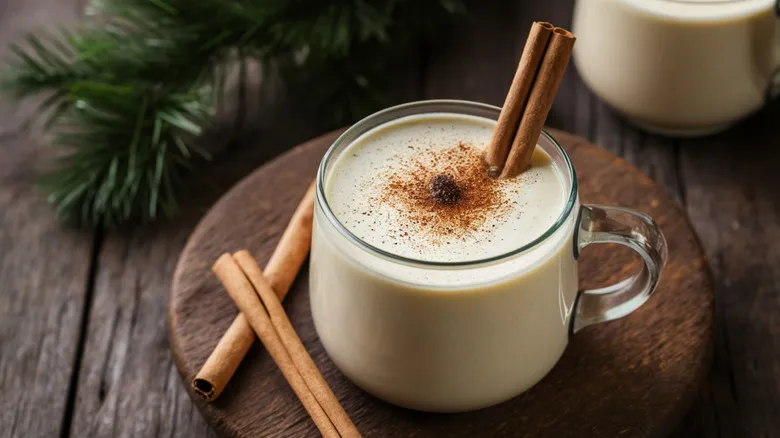
As a manufacturer of a consumable product, your goal is to motivate customers to use (and consequently purchase) as much of it as possible. For Hellmann's, this involves discovering innovative and imaginative ways to enjoy their renowned mayonnaise. While it's common knowledge that mayo enhances a tuna sandwich or is a staple in pasta salad, Hellmann's recipe developers decided to think far beyond the ordinary.
In a holiday promotion in 2022, Hellmann's teamed up with Muddling Memories, a hospitality and mixology group based in Brooklyn, to create an unforgettable holiday beverage: frozen mayo-nog. This unique drink is a slushy, alcoholic twist on eggnog, substituting a generous scoop of Hellmann's mayonnaise for eggs. The concoction also includes rum, apple brandy, cognac, heavy cream, milk, cinnamon, nutmeg, and vanilla. Surprisingly, even the most skeptical reviewers were amazed by its deliciousness. The mayonnaise added a creamy texture, while the alcohol, spices, and ice masked any distinct mayo flavor. If you're intrigued by this but prefer a non-alcoholic option, you can substitute bottled spiced chai instead.
Hellmann's calls its star product real mayonnaise

Cooks and diners choose Hellmann's not only for its taste but also for its sense of familiarity. In a chaotic and unpredictable world, it’s reassuring to know that beloved staples like Hellmann's will always look and taste just as you remember. The blue-and-yellow label has seen minor updates over the years, yet its core design elements have largely remained intact, including the somewhat perplexing phrase "real mayonnaise."
Attentive label readers might question the necessity of this wording—after all, isn’t it clear that the mayonnaise in the jar is genuine? For the Food and Drug Administration, however, the situation is more complex. According to their official guidelines, any product labeled as mayonnaise must contain a minimum of 65% oil, along with eggs. This is why you won’t find the term mayonnaise on a Miracle Whip label, as it doesn’t meet the oil content requirement. Consequently, while Hellmann's proudly claims its product is indeed real mayonnaise, other brands have found that the term "mayo" is not subject to regulation. This loophole has enabled a startup to introduce a creamy, egg-free alternative called Just Mayo.
Hellmann's mayonnaise doesn't always need refrigeration
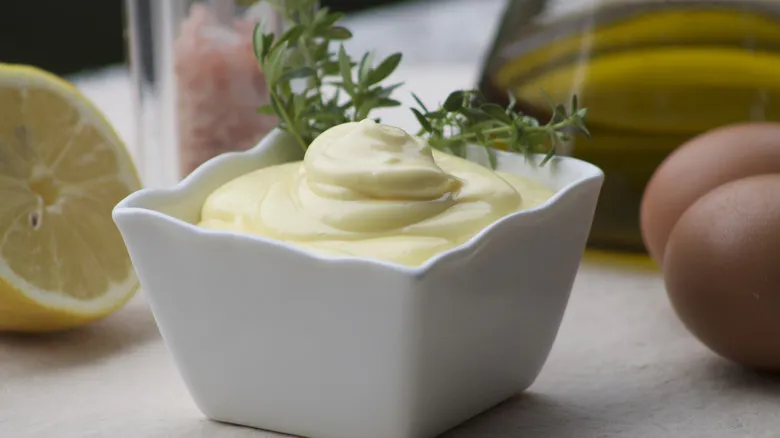
As the summer picnic season approaches, you might hear warnings about being cautious with mayonnaise-laden dishes like potato salad or chicken salad. It's commonly said that if these dishes are left out in warm weather for too long, the mayonnaise can become contaminated and lead to food poisoning. To be on the safe side, popular advice suggests keeping any mayo-containing dish chilled during hot weather or consuming it right after serving.
While potato and chicken salads can indeed cause foodborne illness, mayonnaise is seldom the main issue. Instead, the low acidity of the other ingredients, combined with inadequate kitchen or personal hygiene and elevated temperatures, are the true culprits. Commercial mayonnaise brands, such as Hellmann's, have sufficient acidity to inhibit bacterial growth, and certain types, particularly those in squeeze bottles, are formulated to remain safe at room temperature and can even be stored outside the fridge.
Hellmann's tried to make mayonnaise cakes a thing
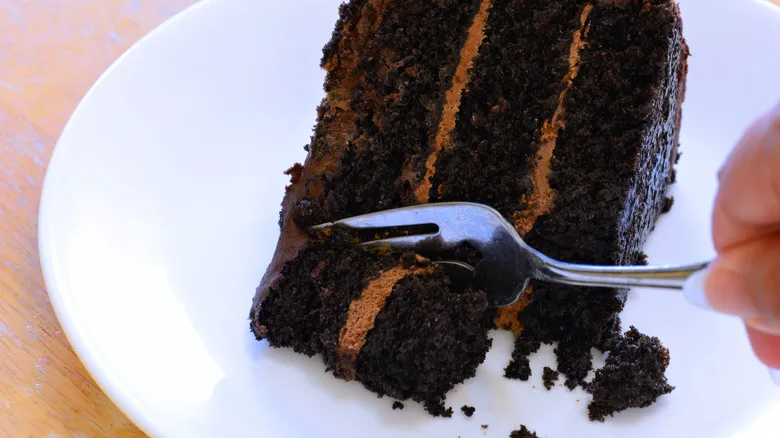
Richard Hellmann, the founder of Hellmann's, was a trailblazer in the commercial mayonnaise industry. Alongside his business partner, he also introduced the concept of corporate cookbooks to encourage consumers to utilize their product. In 1922, the brand provided free copies of their inaugural booklet, "The Chef's Standby; Blue Ribbon Recipes," with every jar of mayonnaise purchased.
When Hellmann sold the brand in 1927, the new owners continued to leverage cookbooks as marketing tools. A notable dessert cookbook published in 1937 featured a recipe for Chocolate Mayonnaise Cake, which substituted mayonnaise for the traditional eggs and fat—an understandable choice, given that mayonnaise primarily consists of eggs and oil. As the Great Depression loomed and dairy rationing ensued, this mayonnaise cake offered a practical and accessible way for home cooks to indulge themselves and others. For today’s cooks, it remains a delightfully moist and quick recipe to prepare. And rest assured, the taste of mayonnaise is undetectable.
Dale Earnhardt's favorite sandwich features bananas and Hellmann's

When we think of mayonnaise, sandwiches are often the first thing that comes to mind. No Thanksgiving leftover turkey sandwich feels complete without a generous spread of mayo, and it’s essential in beloved fillings like egg salad, tuna salad, and for those in the South, zesty pimiento cheese—a delicious blend of grated cheddar and chopped pimientos mixed with mayo.
Like many sandwich enthusiasts, racing icon Dale Earnhardt, Jr. prefers Hellmann's as his go-to mayonnaise. However, his favorite sandwich filling might surprise some of his fans. He enjoys sliced bananas nestled between slices of white bread generously coated with Hellmann's. Surprisingly, he’s not alone; this quirky yet simple sandwich is a beloved choice in the American South, where its filling and budget-friendly ingredients made it a staple during the Great Depression. As a proud Southerner himself (born in North Carolina), Earnhardt's sandwich preference reflects his deep-rooted heritage.
Hellmann's suggested adding mayo to coffee, sparking online outrage

Since its inception, Hellmann's has cultivated a loyal following, including notable fans like Katie Couric and Drew Barrymore. Yet, the brand has refused to become complacent, consistently seeking innovative ways to market its signature product. While some of its promotional concepts—such as mayonnaise-infused eggnog and chocolate cake—have sparked curiosity, few have faced significant backlash—until the brand suggested adding mayonnaise to coffee on the social media platform Twitter (now referred to as X).
To be fair, people have been incorporating creamy elements into coffee for centuries. A popular delicacy in Vietnam is egg coffee, which features a cup of dark coffee topped with a frothy, custard-like mixture of whipped egg yolks and condensed milk. Perhaps Hellmann's aimed to create a simplified version of this traditional treat, but even its most devoted fans were not on board. One supporter responded to the company's tweet, saying, "I love you deeply, Hellmann's, but this tweet is pure violence" (via the Mirror). Singer Dionne Warwick was so disgusted by the suggestion that she blocked Hellmann's account.
Hellmann's now has a vegan version of its mayo

While Hellmann's classic mayonnaise remains a favorite among many chefs and food enthusiasts who enjoy its well-balanced flavor and creamy texture, an increasing number of consumers are moving away from meat and dairy products. Between 2014 and 2018, the number of Americans adopting vegan diets surged by 600%, with individuals citing various motivations for their choices. For some, health benefits and weight loss were key factors, while others were driven by concerns for animal welfare or environmental issues.
Given that Hellmann's traditional egg-based product is unsuitable for vegans, the company launched its Plant-Based Dressing and Spread in 2016. Although there are numerous methods to create vegan mayonnaise, the primary ingredients in this product include canola oil, water, starch, and distilled vinegar. Since it lacks eggs, it cannot be legally labeled as mayonnaise; however, Hellmann's website suggests using it as a sandwich spread and condiment for veggie burgers, indicating that it is intended to serve a similar purpose as traditional mayonnaise.
Recommended
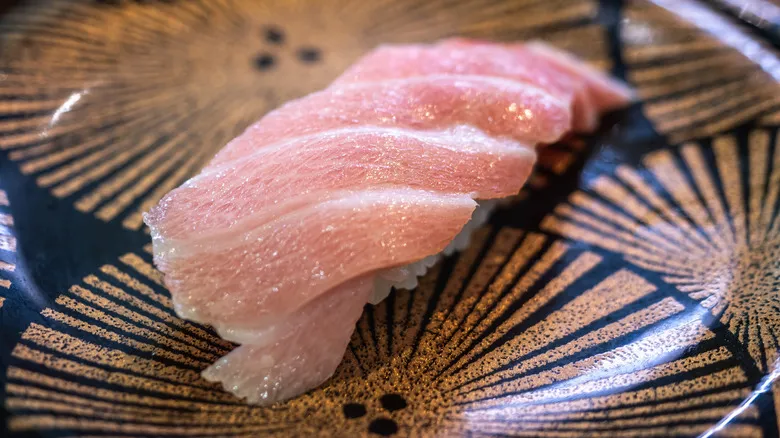
Why Is Otoro Tuna So Expensive?

Why McDonald's Vegan Burger Failed In America

Why Anthony Bourdain's 'Grandma Rule' Is Genius For Trying Food When Traveling

The History Behind Cracker Barrel's Iconic Gift Shop
Next up

